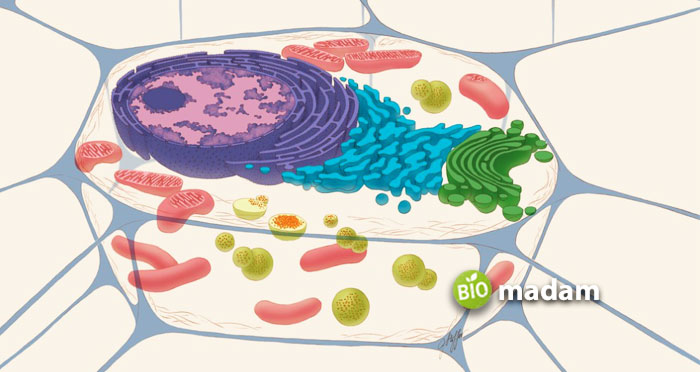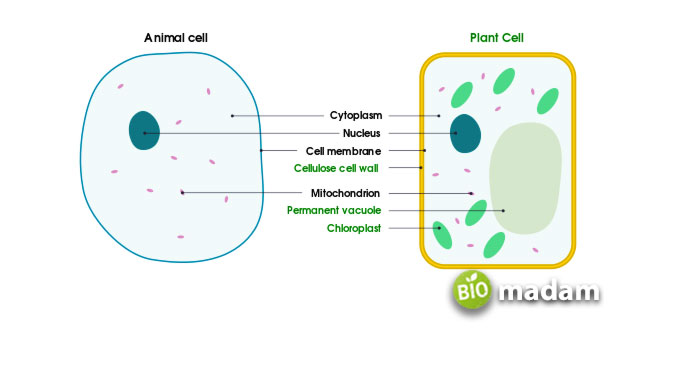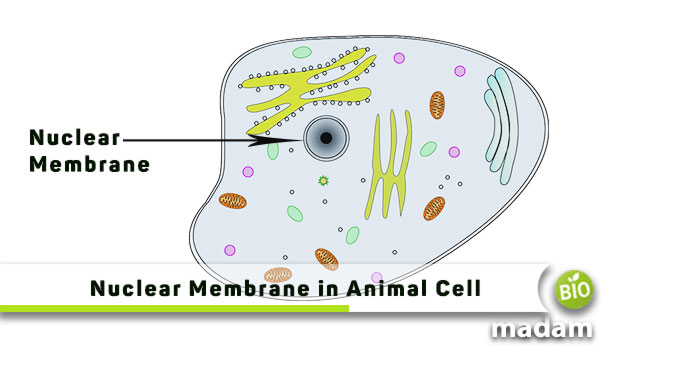Eukaryotic cells are complex entities comprising numerous organelles. The nucleus is one of the most important organelles with a critical role in the cell; it contains genetic information and ensures proper division of hereditary material among daughter cells. The nuclear membrane is a vital component of the animal cell, contributing to multiple essential functions. This article tells you everything you need to know about the function of nuclear membranes in animal cells.
What is the Nucleus?
The nucleus is an integral part of eukaryotic cells and contains genetic information. This information is transferred through the eukaryotic DNA in the nucleus, while the DNA in prokaryotes is dispersed in the cytoplasm. Thus, the nucleus acts as an envelope to protect genetic material from the external environment in eukaryotic cells, including animals. It also provides a space for DNA multiplication and division among daughter cells. The nucleus is rightfully also called the brain of the cell.
Nucleus in Animal Cell
The animal cell nucleus is the same as in any other eukaryotic cell. It comprises a nuclear membrane, nucleolus, and nucleoplasm. It may also contain some other proteins and RNA. Despite the same structure in animal and plant cells, the nucleus’s location differs.
The animal cell nucleus appears in the center of the cell in the cytoplasm. Conversely, the large vacuole in a plant cell pushes the nucleus to the side. Yet the shape of the nucleus in both is the same, i.e., spherical.
Nuclear Membrane in Animal Cell
The nuclear membrane in animal cells comprises two membranes: the inner and outer membrane, with a space between them. The membranes have a phospholipid bilayer like the plasma membrane.

The structure and function of each component of the nuclear membrane is as follows:
Outer Membrane
The outer membrane attaches the rough endoplasmic reticulum, the site of protein synthesis. Thus, the outer membrane plays a pivotal role in the transport of proteins. It also has some ribosomes on it.
Inner Membrane
The inner nuclear membrane has the nuclear lamina attached, which also connects to the chromatin; it comprises DNA and protein structures.
Perinuclear Space
The perinuclear space is a 10-50 nm wide area between the outer and inner membrane. It contains protein-rich secretions and acts as a barrier between the cytoplasm and the nucleus.
Nuclear Pores
The animal nuclear membrane also contains small holes called nuclear pores. They comprise a large complex of proteins (over 50) that regulate the movement of molecules across the nucleus.
Function of Nuclear Membrane in Animal Cell
Protects the DNA
The nuclear membrane’s most important function is to protect the DNA within the nucleus. DNA comprises the genetic information required for reproduction. So, the nuclear membrane indirectly contributes to reproductive function by protecting the DNA.
Selective Transport
The nuclear pores in the nuclear membrane of animal cells allow the movement of selected molecules in and out of the nucleus. Ions and small molecules diffuse across the nucleus easily. The pores also allow important proteins to enter the nucleus.
Offers Membrane Fluidity
The cholesterol in the nuclear membrane in animal cells provides fluidity to the nucleus. This intricately regulated process is crucial to maintaining homeostasis and avoiding cell death.
Avoids Mutations
The transport of selective molecules through the nucleus pores contributes to checking, repairing, and cell death through apoptosis to prevent harmful mutations, such as cancer.
Responds to Growth Signals
The nuclear membrane acts as the communication bridge between the cytoplasm and the nucleoplasm. It responds to growth-promoting and growth-inhibiting signals from the cytoplasm through cell signaling.
Protection against Infections
While it is a lesser-known function of the nuclear membrane in animal cells, research shows that specific proteins in the nuclear membrane may be connected to a few infections. Further study and understanding of these protein combinations is yet to reveal more about how they influence infections.
Animal vs. Plant Nuclear Membrane

Despite having a similar composition, the animal and plant nuclear membranes vary slightly. Animal cell nuclear lamina comprises specific proteins like Lamin B1, Lamin B2, LMNA, and Emerin, that plant nucleus membrane lacks. However, the nucleus membrane in plant cells has other unique proteins absent in animals. Furthermore, the nuclear membrane in plant cells also doubles as a support structure during cell division, whereas centrosomes only support animal cells and not plant cells.
The Bottom Line
The animal nucleus contains various components, including the nuclear membrane. The nuclear membrane comprises the outer membrane, inner membrane, perinuclear space, and nuclear pores. All the parts collectively contribute to the function of the nuclear membrane in animal cells. The nuclear membrane protects the genetic material and allows the transport of important molecules. It also protects the cell from mutations and infections and provides fluidity for cell survival. Moreover, it responds to growth-promoting and inhibiting signals.
FAQs
What cell has no nuclear membrane?
Out of all the organisms present, the prokaryotic cells lack a proper nuclear membrane. These are the simplest organisms whose cellular material is dispersed within the cell.
What color is the nuclear membrane in animal cells?
Different organelles have different colors to distinguish one from the other. Just like that, when stained and observed under a microscope, the nuclear membrane of an animal cell appears dark brown.
What is the cell membrane located in an animal cell?
The cell membrane is the outermost semi-permeable animal cell membrane covering the cytoplasm. It comprises a phospholipid bi-layer and allows the movement of material in and out of the cell.
What color is the nuclear membrane in an animal cell?
The standard color of the nuclear membrane in images is brown, but some microscopic observations also show a yellow hue.

Hello, I would like to introduce myself to you! I am Chelsea Rogers, an experienced blog writer for science articles, holding an MPhil degree. My enthusiasm to grab the best knowledge, let it relate to botany, zoology, or any other science branch. Read my articles & let me wait for your words s in the comment section.

